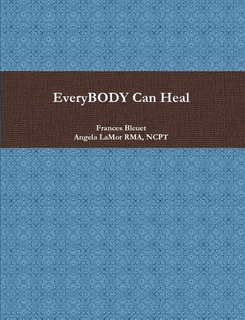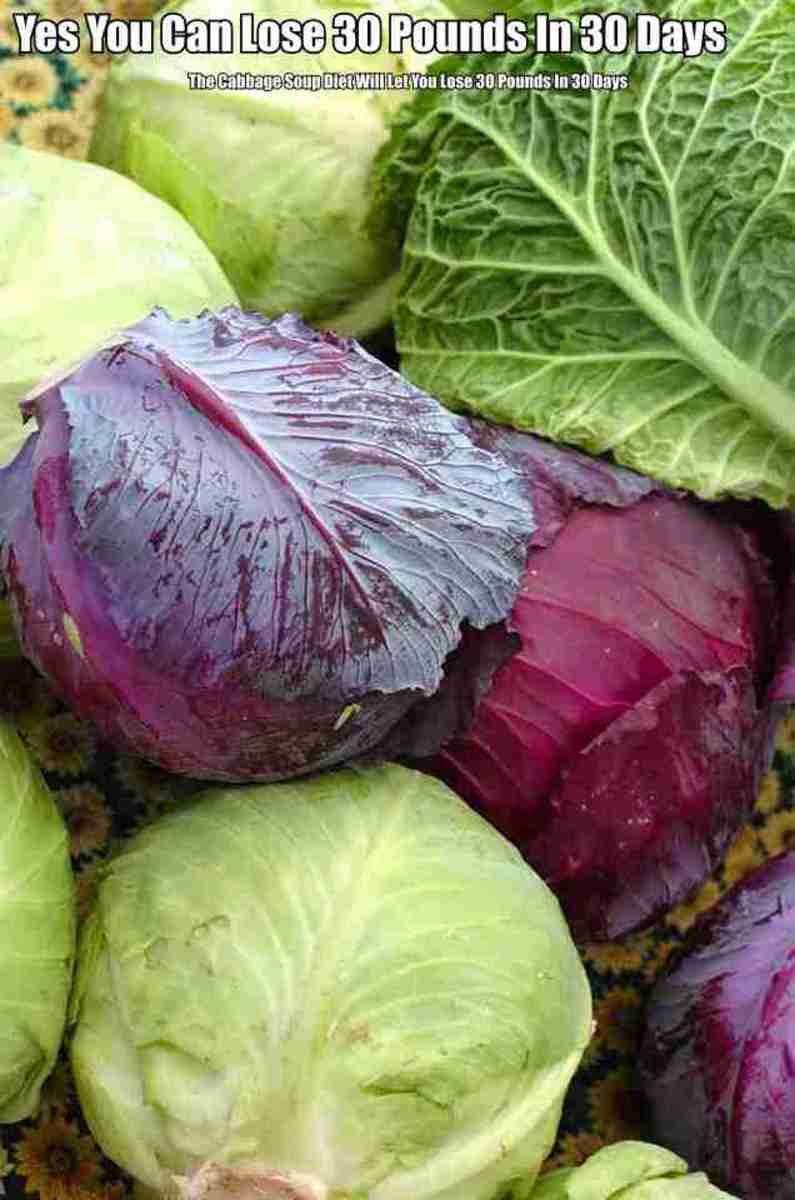Allergies-Food Families-Causes and Symptoms
Written by Frances Bleuet and Angela LaMor RMA, NCPT authors of "EveryBODY Can Heal" Frances Bleuet is also owner of Nutrition for Weight Loss
Our bodies were designed to protect and heal us. When this system works properly it destroys bacteria, viruses, fungi, parasites and mutated cells such as cancer cells. When it doesn't it attacks harmless substances such as the food we eat.
When you eat, breathe or touch something that you are allergic to your body commonly produces one of two chemicals: histamines, which cause symptoms you would need an antihistamine for, such as sniffling and sneezing, or it produces serotonin (a naturally occurring mood altering chemical) which makes you feel good.
Serotonin is the same chemical that is produced in the body when you eat chocolate or are in love. The good feeling from the serotonin makes you crave the allergen, but even though it makes you feel good, it is still putting a strain on your immune system. Either of these two substances can be released anywhere in the body and depending on which chemical is released and where it's released determines the symptoms you experience. If all of your body systems react at once, it is called anaphylactic shock, a potentially life-threatening reaction.
Allergies have been linked to deficiencies, early exposure to potential allergens and hereditary factors. Although the tendency to have allergies runs in families, the specific allergy does not. So your mother may be allergic to wheat and you may be allergic to milk products.
Although allergies are caused by a hypersensitive immune system, having allergies wears down your immune system and makes you more susceptible to contracting colds and other common ailments.
Allergies can cause almost any symptoms because the symptoms are caused by your body's reaction to a substance, not by the substance itself. The immune system is trying to push the substance out of your body. The only symptom I know of that is not asociated with an allergy is fever. If you have a fever, you probably have more than just an allergy.
Some common symptoms associated with allergies are:
Asthma
Wheezing
Coughing
Congestion
Rashes
Hives
Peeling skin
Redness
Swelling
Sinusitis
Itchy nose
Itchy eyes
Watery eyes
Sneezing
Food cravings
Edema (water retention)
Fatigue
Burning stomach
Hiccups
Dark circles under the eyes
Bags under the eyes
Susceptibility to respiratory infections
Cloudy thinking-brain allergy
Difficulty concentrating-brain allergy
Memory loss-brain allergy
Tingling of the lips, tongue or throat
Swelling of the lips, tongue or throat
These are common symptoms of an allergy, there are also many odd symptoms associated with allergies. Some symptoms begin instantly after exposure. Others may take hours or days to appear as the allergen makes its way through the digestive tract. That's why it's imperative to keep a detailed journal if you suspect allergies are the cause of your symptoms. (more on this below)
Allergies should not be ignored. A minor allergic reaction can progress to a major serious reaction with subsequent exposures.
In some cases, if the allergen is avoided for a period of time, the body will stop recognizing the substance as an allergen but in other instances, such as a peanut allergy, the immune system tends to continue to recognize the allergen. So chances are if you allergic to peanuts, you will always be and you must be aware that the slightest contact could result in a serious reaction.
There have been cases of reactions (including fatal reactions) from peanut allergen contact as minute as eating a nut (other than a peanut) that was processed in a factory that also processes peanuts or by kissing someone who has consumed peanuts. Most cases of anaphylactic shock have resulted from allergies to shellfish, peanuts, penicillin, and bee stings. Anyone at risk of having a serious reaction to an allergen needs to be under continuous medical care and guidance.
The best way to identify allergens is to keep a diary of symptoms, activities, foods consumed, products used, dates and times. Be open-minded and look for patterns. The most common allergens may be nuts, shellfish, corn, wheat, milk products, yeast, dust and pollen but there have been documented cases of allergies to sunlight, water, fruit and vitamins, virtually everything.
It is important to know food and plant families. If you are allergic to a substance you may also be allergic to a related substance.
Finding the source of your food related symptoms may be a little tricky. You may only be allergic to unpeeled fruit. In which case, it may not be the fruit at all but instead some other plant that grows in a nearby field and blows pollen or another substance onto the skin of that fruit. This is an example of cross contamination.
You may only react when you eat two foods that you are allergic to at the same meal or during a season when you are already experiencing airborne allergies. Also allergies may not be the cause of your smptoms. Your problem with food may be from an intolerance or a sensitivity.
FOOD FAMILIES
arrowroot-arrowroot
Banana family-banana, plantain (harmful when eaten raw)
Birch-filbert, hazelnut
Brazil nut-brazil nut
Buckwheat-a fruit, not a grain-buckwheat, garden sorrel, rhubarb
Cactus-cactus, prickly pear, tequila
Cashew-cashew, mango, pistachio, poison ivy
Cereals-barley, malt, bran, cane sugar, molasses, dextrose, chestnut, corn, cornmeal, corn starch, corn oil, corn sugar, corn syrup, farina, graham flour, gluten flour, oats, oatmeal, rice, rye, wheat, flour, wheat germ, wild rice, millet, sorghum, bamboo shoots
Composite family-artichoke, chicory, dandelion, endive, escarole, lettuce, sesame seeds, oil, sunflower seeds, vermouth, yarrow
Cocoa, cola bean and chocolate-symptoms from these food items could be a sensitivity to the caffeine and related substances and not a true allergy
Corn-corn syrup, cornstarch, corn chips, popcorn, corn flakes, corn muffins, oil, fructose and glucose
Crustceans-crab, crayfish, lobster, shrimp
Eggs-mayonnaise, eggnog, custards, albumin, meatloaf, meatballs, meringue, some ice cream, cake mixes, pancakes, flu shots-some flu shots are egg based
Fish, shellfish-shrimp, lobster, crab, sardines, oysters, clams, scallops, mussels, anchovies
Flax-flaxseed, flaxseed oil, linseed oil
Freshwater fish-bass, catfish, croaker, perch, pike, salmon, trout, whitefish
Fructose-fruit, fruit products, honey, and some vegetables, such as onions (contain a related substance)
Fungus-yeast, molds, mushrooms, antibiotics
Ginger-arrowroot, ginger, turmeric
Gooseberry-current, gooseberry
Goosefoot-beet, chard, spinach, thistle
Gourd-casaba, cantaloupe, cucumber, honey dew, melon, muskmelon, pumpkin, squash, watermelon
Grape-brandy, champagne, creme of tartar, grape, raisin, wine, wine vinegar, juices, some steak sauces (may contain raisin juice)
Heath-cranberry, blueberry, huckleberry, wintergreen
Honeysuckle-elderberry
Iris-saffron
Lactose-milk, milk products
Laurel-avocado, bay leaves, camphor, cinnamon, laurel, sassafras
Legume-acacia, acacia gum, alfalfa, black-eyed pea, carob, cassia, chickpea, field pea, green pea, guar gum, kidney bean, lentil, licorice, lima bean, locust bean gum, navy bean, peanut, peanut oil, pinto bean, soybean, soybean oil, soybean flour, lecithin, split pea, string bean
Lily-asparagus, chives, garlic, leek, onion
Mallow-cottonseed meal, cottonseed oil, okra
Maple-maple sugar, maple syrup
Milk-cream, butter, powdered milk, eggnog, cheese, cottage cheese, yogurt, sour cream, milk shakes, ice cream, custard, pudding, cream soups, whey, casein, evaporated milk, cream cheese, buttermilk, onion dip, mashed potatoes.
Mint-basil, horehound, marjoram, mint, oregano, peppermint, rosemary, sage, spearmint, thyme
Morning glory-sweet potato, yam
MSG (monosodium glutamate)-Hydrolyzed vegetable protein-If you are deficient in vitamin B6, eating MSG can cause allergy-like symptoms
Mulberry-figs, hops, mulberry
Mussels-abalone, clams, mussel, oyster, scallop, squid
Mustard-broccoli, brussels sprouts, cabbage, cauliflower, chinese cabbage, collard, collard greens, kale, kohlrabbi, kraut, horseradish, mustard, mustard greens, radish, rutabaga, turnips, turnip greens, watercress
Myrtle-allspice, cloves, eucalyptus, guava, paprika, pimento
Nightshade family-cayenne, eggplant, bell pepper, chili pepper, green pepper, red pepper, sweet pepper, paprika, potato, tabasco sauce, tobacco, tomato, capsicum, pimento, potato
Nutmeg-mace, nutmeg
Nuts-oil, peanut butter, may react to other nuts
Olive-olives, olive oil
Orchid-vanilla
Palm-coconut, date, palm cabbage, sago
Parsley-angelic, anise, carrots, celery, caraway, celery seed, coriander, cumin, date, dill, fennel, parsley, parsnips, water celery
Pawpaw-pawpaw, papaya, papain
Peanuts-heated peanut oil is considered safe, but cold pressed oils as used in Asian cooking is not safe and can contain traces of peanuts too small to see!!! Avoid tree nuts, those allergic to peanuts are not necessarily allergic to tree nuts but because of cross contamination in processing and packaging plants, tree nuts can contain traces of peanuts.
Pepper-black pepper, white pepper
Pineapple-pineapple
Pine-juniper, pinion nut
Plum-almond, apricot, cherry, nectarine, peach, plum, prune
Pomegranate-pomegranate
Poppy-poppy seed
Rose family-includes the apple family-apple juice, apple cider, applesauce, apple vinegar, apple wine, pear, quince, pectin, boysenberry, dewberry, loganberry, strawberry, youngberry, raspberry. The apple family is a part of the rose family
Salt water fish-bass, cod, flounder, herring, mackerel, salmon
Sedge family-water chestnuts (not nuts)
Soy-soy sauce, soy milk, lecithin, tofu
Spurge-tapioca
Sulfites-preservatives for salads, vegetables, wine, beer, fish, shellfish, syrups, candy, sauerkraut, olives, pickles, horseradish, fruit and vegetable drinks, jam, potato chips, gravy, sodium sulfite, sulfur dioxide
Tea-tea
Tree nuts-cashews, pecans, walnuts, almonds, pistachio nuts, chestnuts, hazelnuts, macadamia nuts, pesto sauce and some oils
Walnut-butternut, hickory nut, pecan, black walnut
Wheat-soy sauce, wheat bread, pasta, cereal, graham flour, wheat germ, wheat and white flour, cake, gluten, hydrolyzed vegetable protein, vegetable gum, bulgur
Yeast-sour cream, buttermilk, yogurt, cheese, cream cheese, mono sodium glutamate, canned fruit, canned vegetables, vitamins. You may have a problem with some types of yeast and not others
WARNING:
What's healthy for one person may be deadly for another. You have to find what works for you and what doesn't. It doesn't matter if it's organic, kosher or home grown, if you are allergic to it, it is a poison to you.
This article was compliled from excerpts from the book "EveryBODY Can Heal" by Frances Bleuet and Angela LaMor RMA, NCPT (as featured on the Front page of the Messenger Press, and the Health Page of the Asbury Park Press)
See below
POLL
Was this hub helpful?

- Frances Bleuet's Books and Publications Spotlight
Click here to purchase "EveryBODY Can Heal" on sale now!






